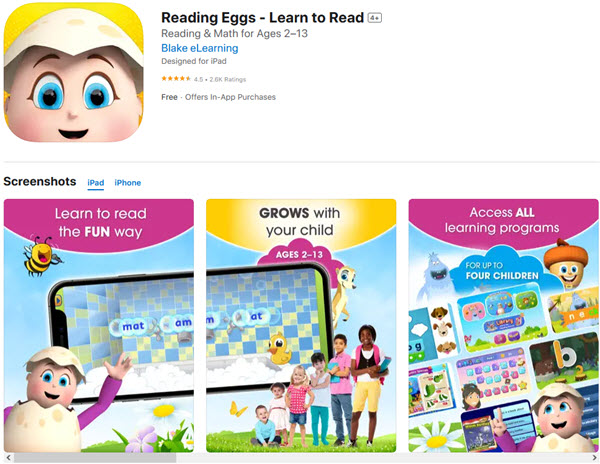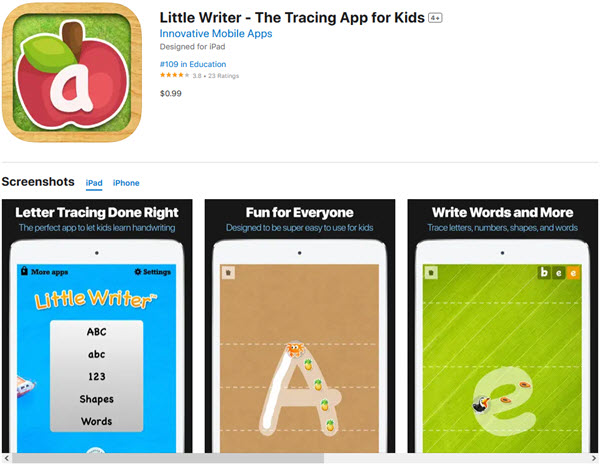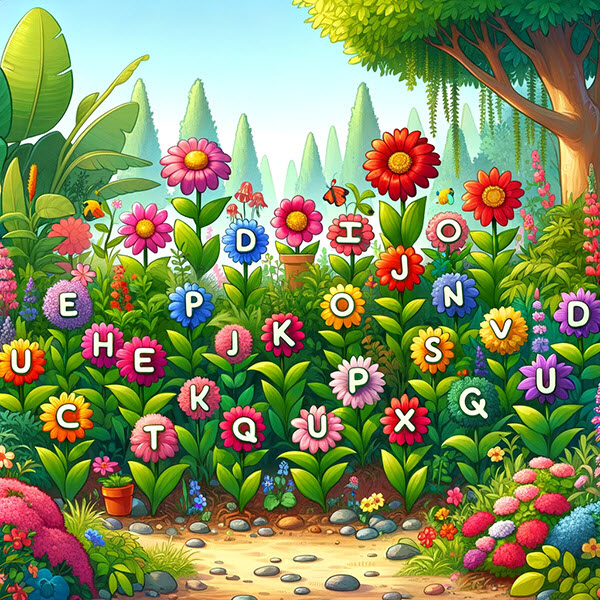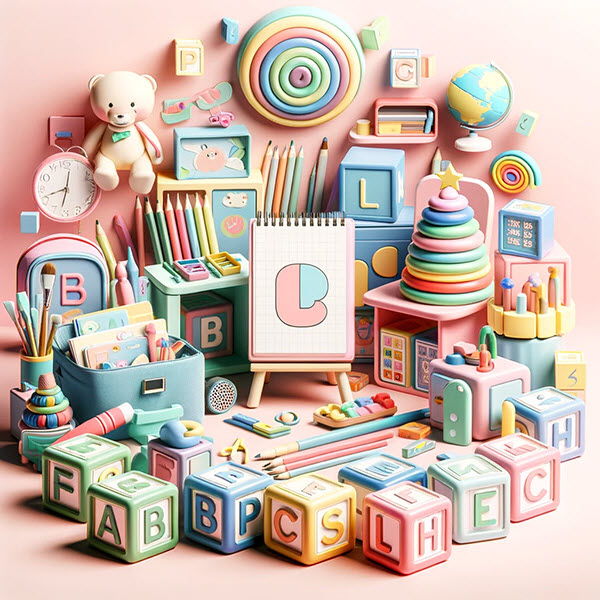Unlocking ABCs: The 5 Best Apps for Learning the Alphabet
In today’s fast-paced digital world, the quest to find the best app for learning the alphabet for our little ones can feel overwhelming.
With a myriad of options at our fingertips, how do we, as parents, make the informed choice that not only entertains but educates?
Understanding the pivotal role of early literacy in a child’s developmental journey, we embark on a comprehensive exploration of the leading apps designed to master the ABCs. This article promises to guide you through the top 5 alphabet learning apps of 2024.
Join us as we delve into the features, user interfaces, and educational strategies that set these apps apart, ensuring your selection enhances your child’s learning experience with engagement, ease of use, and effectiveness.

The Foundation of Early Literacy
The Crucial Impact of Early Literacy
The seeds of learning are deeply rooted in early childhood, and early literacy stands as a pivotal predictor of a child’s academic prowess and lifelong learning journey.
It forms the bedrock for academic excellence, enabling children to navigate and grasp concepts across various subjects effortlessly. Incorporating reading programs for kids into daily routines can significantly bolster this foundation, offering structured pathways to literacy that cater to individual learning styles.
More than just a precursor to academic success, early literacy hones cognitive skills and instills a perpetual passion for reading, enhancing personal development in profound ways.
Interactive Learning: A Catalyst for Literacy Skills
Interactive learning emerges as a dynamic force in the realm of early literacy, transforming the acquisition of reading skills into an engaging, hands-on adventure. This approach, pivotal for literacy, invites young learners to immeran interactive, tactile experience with letters and words, significantly enhancing phonetic awareness and letter recognition.
Such interactive methodologies leave lasting impressions, fostering an active rather than passive engagement with learning.
This journey through literacy is not merely about reading but about nurturing a deep connection with the alphabet.
Choosing the Best Alphabet Learning Apps: Our Criteria
Educational Value: The Core of Alphabet Apps
The cornerstone of any exceptional alphabet learning app lies in its educational value.
These apps transcend mere visual displays of letters, delving deep into phonics, word recognition, and early reading skills, all while aligning with pre-reading educational standards.
A high-quality app ensures a structured learning progression, tailored to a child’s pace, laying a solid foundation for literacy.
User Engagement: The Key to Captivating Learning
User engagement is vital, with the best apps employing vibrant graphics, playful characters, and interactive challenges to make learning an exciting adventure.
The aim is to keep children engaged and eager to return, ensuring that each moment spent on the app contributes to their educational journey.
Incorporating phonics lessons into the mix, such as strategies on how to learn the phonetic alphabet, significantly amplifies user engagement, offering an essential foundation for reading that captivates and educates simultaneously.
Adaptability: Personalized Learning Paths
Adaptability is crucial for a personalized learning experience.
The leading apps adjust their difficulty based on the user’s progress, offering a balanced challenge that promotes engagement without leading to frustration or boredom. This responsive approach ensures a tailored educational pathway for each learner.
Parent Feedback: A Measure of Success
Parent feedback provides invaluable insights into an app’s effectiveness and appeal.
Reviews from parents can highlight an app’s educational strengths, areas for improvement, and overall impact on learning, guiding other parents in making informed decisions for their children’s literacy journey.
2024’s Premier Alphabet Learning Apps: An In-Depth Look
#1. ABCmouse: A Comprehensive Learning Platform

ABCmouse stands out in the realm of alphabet learning apps with its expansive curriculum that enchants the learning journey through an interactive pathway. Catering to children aged 2-8, this platform is a treasure trove of knowledge, covering a broad spectrum of subjects from reading and math to art, beyond just the alphabet.
Why ABCmouse Leads the Pack
ABCmouse shines as a premier educational resource, combining comprehensive learning with fun. Its step-by-step learning path offers children a tangible sense of progression and achievement, making it a top pick for parents seeking a well-rounded educational tool.
Top Features of ABCmouse
- Comprehensive Curriculum: Encompassing reading, math, art, and more, it provides a holistic educational experience.
- Interactive Activities: With over 9,000 activities, it ensures that learners remain engaged.
- Personalized Learning Paths: Tailors the learning experience to each child’s pace and level.
- Progress Tracking: Visual aids help children and parents monitor learning advancements.
- Cross-platform Accessibility: Available on iOS, Android, and the Web, it offers flexible learning opportunities.
The Benefits of ABCmouse
- Builds a strong academic foundation from an early age.
- Uses a variety of activities to cater to different learning styles.
- Promotes self-paced learning, boosting confidence.
- Suitable for a wide age range, making it a versatile tool.
- Regular updates keep the content fresh and innovative.
Considerations
- A subscription is required for full access, which might be a barrier for some families.
- The vast amount of content might be overwhelming for some learners.
ABCmouse is perfect for parents looking for an educational app that goes beyond alphabet learning, preparing children for school with a multi-subject approach. Its integration with reading programs offers a holistic learning experience, making it a standout choice for foundational early education.
By visiting ABCmouse, parents and educators can explore the myriad of features and benefits it offers, ensuring a well-rounded and engaging learning experience for young learners.
#2. Endless Alphabet: Creative Vocabulary Building

Endless Alphabet emerges as a standout application in the realm of early education, particularly in teaching the alphabet and enhancing vocabulary. This app distinguishes itself with a unique blend of phonetics and semantics, making it an invaluable resource for young learners.
Revolutionizing Alphabet Learning
Beyond merely teaching the ABCs, Endless Alphabet enriches children’s linguistic capabilities. Each letter is associated with words, unraveling their meanings through captivating animations. This approach not only teaches but also entertains, creating a memorable learning experience.
Key Features
- Expansive Vocabulary: An extensive collection of words that go hand-in-hand with alphabet learning, broadening children’s lexical understanding.
- Animated Teaching Aids: Engaging animations that serve both to educate and entertain, capturing children’s attention.
- Interactive Puzzles: Designed to enhance cognitive development and retention, these puzzles make learning stick.
- User-Friendly Interface: A kid-friendly design allows for independent exploration, fostering learners’ autonomy.
- Auditory Learning Enhancement: A gentle, guiding voice-over accompanies children through the game, enriching the auditory learning experience.
The Advantages
- Immersive Learning: Combines humor and fun, providing an engaging educational journey.
- Adaptive Difficulty: Introduces increasingly complex words as the child’s understanding grows, making it suitable for a range of ages.
- Memory and Comprehension: Utilizes visual and audio cues to reinforce memory and understanding in an enjoyable manner.
- Self-Paced Exploration: Encourages children to learn at their own pace, promoting exploratory learning.
- Versatile Learning Tool: Availability across multiple platforms ensures learning can take place in varied environments.
Considerations
While Endless Alphabet is an exceptional tool for vocabulary building, it may present challenges for children at the very beginning of their alphabet learning journey due to its advanced vocabulary.
Ideal for Exploratory Learners
Endless Alphabet is ideally suited for pre-schoolers and young school-goers poised to expand their vocabulary in a dynamic and playful setting. It’s particularly beloved by families who value creativity, storytelling, and a deepened educational experience in their children’s learning apps.
By visiting Endless Alphabet, parents can discover how this app turns learning into an adventure, filled with wordplay and animations that both educate and entertain. It’s a testament to how digital learning tools can complement traditional education methods, providing a rich, engaging experience that nurtures a love for language from a young age.
#3. Reading Eggs – Learn to Read: A Foundation for Future Success

Reading Eggs – Learn to Read marks its territory in the educational app landscape as a comprehensive literacy tool, revolutionizing how children learn to read. With a scaffolded learning approach, it caters to a wide age range, from toddlers to preteens, ensuring that early reading skills are not just taught but mastered.
Building a Solid Reading Foundation
At the heart of Reading Eggs is a series of in-depth guided reading lessons and phonics games. These components are meticulously designed to build a robust foundation in reading, blending engagement with effectiveness seamlessly.
Core Features
- Extensive Digital Library: With over 2,500 digital books, it caters to diverse interests and reading levels, fostering a love for reading.
- Personalized Guided Lessons: Tailored to individual learning paces, these lessons ensure progress at a comfortable speed.
- Interactive Learning Activities: Focus on phonics, spelling, and sentence structure to enhance literacy skills comprehensively.
- Progress Monitoring: Regular assessments track learning milestones and adjust difficulty, personalizing the learning journey.
- Motivational Elements: A cast of engaging characters and a rewards system keep young readers motivated and eager to learn.
Advantages of Reading Eggs
- Promotes Reading Enjoyment: A vast, varied library encourages children to explore different genres and subjects.
- Foundation for Academic Success: Critical reading and writing skills are developed, setting the stage for future academic achievements.
- Evidence-Based Approach: Interactive activities are proven to significantly enhance learning outcomes.
- Insightful Parental Dashboard: Offers detailed feedback on a child’s progress, enabling effective support.
- Learning On-the-Go: Compatibility with iOS, Android, and Web platforms allows for flexible learning environments.
Considerations
The richness and depth of the app’s content might initially overwhelm some early learners.
Ideal for Emerging and Advancing Readers
Reading Eggs – Learn to Read is optimally designed for children aged 2-13 who are either taking their first steps in literacy or looking to deepen their reading skills. It stands out as a structured, comprehensive program that not only teaches but also excites children about the journey of reading.
By exploring Reading Eggs – Learn to Read, parents can unlock a world of literacy for their children, where learning to read is transformed into an adventure filled with discovery, achievement, and the joy of progressing from decoding letters to fluently reading entire books.
#4. Little Writer – The Tracing App for Kids: Enhancing Writing Skills

Little Writer – The Tracing App for Kids emerges as a tailored solution aimed at bolstering the fine motor skills essential for writing. This application stands as a testament to the power of focused, interactive play in transforming the learning of letters, numbers, and shapes into an enjoyable endeavor.
Focused Approach to Learning
Little Writer distinguishes itself with its simplicity and targeted design, making tracing an engaging and rewarding activity for young learners. Its direct approach to developing writing skills through interactive exercises makes it an invaluable tool for early education.
Core Features
- Tracing Exercises: Offers tracing activities for letters, numbers, and shapes, promoting proper writing techniques.
- Introduction to Spelling: Simple word writing exercises introduce early spelling concepts to young minds.
- Interactive Rewards: Features engaging sound effects and animations that celebrate accurate tracing, enhancing the learning experience.
- Customizable Content: Allows the addition of personalized words, tailoring the learning experience.
- Inclusivity: Provides support for left-handed users, ensuring no child is left behind.
Advantages of Little Writer
- Development of Fine Motor Skills: Specifically designed to enhance the fine motor skills necessary for early writing development.
- Engaging User Interface: Keeps children engaged with its interactive design, promoting active learning.
- Letter and Number Recognition: Encourages the recognition of letters and numbers through tactile interaction.
- Targeted Audience: Perfectly suited for toddlers and preschoolers at the onset of their writing journey.
- iOS Accessibility: Availability on iOS devices ensures accessibility for a wide user base.
Considerations
- Its focus on tracing and writing does not cover phonics and reading, possibly requiring supplementary resources.
Ideal for Young Learners
Little Writer is an exemplary choice for toddlers and preschoolers venturing into the world of writing. It excels for children who thrive on interactive, hands-on activities, providing a solid foundation in writing skills that are crucial for their educational journey.
#5. Starfall ABCs: Interactive Phonics Learning

Starfall ABCs excels in the domain of interactive phonics learning, offering a rich, engaging platform for children to explore the alphabet. Renowned for its phonemic awareness and pronunciation exercises, this app is a cornerstone for young readers embarking on their literacy journey.
Engaging Children with Phonics
Its strength lies in a phonics-based learning approach, incorporating games, songs, and animations to make the educational journey both enjoyable and impactful. This method ensures that children not only learn but also enjoy the process, embedding crucial reading skills early on.
Core Features
- Animated Interactive Books: Combine entertainment and education, enhancing letter recognition and sound association.
- ABC Animations: Assist with letter recognition and connecting letters to their sounds.
- Guided Activities: Use glowing arrows and letters for easy navigation, catering to young learners.
- Sight Words Exercises: Expand vocabulary and reading readiness, preparing children for more advanced literacy challenges.
- Accessibility: Free access with an option for additional content through paid membership, making it versatile for various learning stages.
Advantages of Starfall ABCs
- Multiple Learning Styles: Addresses visual and auditory learners with targeted activities.
- User-Friendly Interface: Designed for ease of use, encouraging independent exploration by young learners.
- Confidence Building: Phonics-focused activities boost reading confidence, a crucial step toward literacy.
- Educational Alignment: Aligns with educational standards, ensuring readiness for school.
- Cross-Device Learning: Available across multiple devices, offering a seamless learning experience.
Considerations
- The free version offers substantial value, but full access requires a paid membership.
- While comprehensive for alphabet learning, additional resources might be needed for a complete literacy education.
Ideal for Early Readers
Tailored for pre-readers, particularly those in preschool to kindergarten, Starfall ABCs is an indispensable tool for educators and parents focused on phonics. It lays a solid foundation for reading skills, making it a valuable asset in early childhood education.
By integrating Starfall ABCs into their learning routine, children gain a fun and effective pathway to literacy, encapsulating the essence of interactive phonics learning.
Advanced Features in Alphabet Apps
The evolution of alphabet learning apps has introduced advanced features that significantly enhance the educational experience for young learners. Among these, adaptive learning technologies and the integration of educational standards stand out as pivotal components that contribute to the effectiveness of these digital tools.
Adaptive Learning Technologies: Personalizing Education
The Significance of Adaptive Learning: Adaptive learning technologies represent a monumental shift in educational approaches, tailoring the learning experience to the individual needs of each child. These technologies assess a learner’s abilities in real-time, ensuring the content is perfectly balanced—not too difficult to cause frustration, nor too simple to bore the learner.
This personalized approach accelerates learning, maintains engagement, and ensures that every child can progress at their own pace.
Bespoke Learning Journeys: By analyzing user interactions, adaptive learning apps dynamically adjust instruction and feedback.
This intelligent adaptation creates a custom-fit educational path for each learner, making it an indispensable feature for apps dedicated to fostering successful learning outcomes.
Integration with Educational Standards: Ensuring Quality and Consistency
The Role of Educational Standards: The incorporation of educational standards, such as the Common Core, into app development is crucial for aligning digital learning with traditional educational frameworks.
This alignment guarantees that the learning content not only supports but also enhances the schooling experience, bridging any potential gaps between digital and classroom learning.
Guaranteeing Effective Learning Outcomes: Apps developed in adherence to recognized educational standards ensure that learners are engaging with content that is both relevant and designed to meet key developmental milestones.
This not only promotes a seamless educational experience but also assures parents and educators of the app’s value in the broader learning ecosystem.
In conclusion, the integration of adaptive learning technologies and educational standards in alphabet learning apps, complemented by interactive abc recognition games, marks a significant advancement in the field of educational technology, enhancing the learning experience with innovative strategies for letter familiarity.
These features guarantee a tailored, effective learning journey that aligns with established educational goals, ensuring that digital learning tools are not just supplementary but integral to a child’s educational development.
Expert Tips on Selecting the Right App for Your Child
Matching Apps with Learning Styles
Selecting the right educational app requires understanding your child’s unique learning style.
Personalization features within apps can significantly impact a child’s engagement and success. Visual learners might excel with apps featuring vivid graphics, while auditory learners benefit from sound-rich environments, and kinesthetic learners engage more with touch-based interactions.
To align an app with your child’s learning preferences, seek customizable settings that adapt content delivery methods.
Apps offering diverse interactive activities such as games, storytelling, or songs cater to various learning styles. The capability to monitor progress and adjust difficulty ensures the app remains relevant and supportive as your child grows.
The Crucial Role of Engaging Content and Interactive Design
Engaging content coupled with interactive design is vital for captivating and retaining a child’s interest in learning. These elements transform passive screen time into an active learning experience, empowering children to take control of their educational journey.
The significance of engagement and interactivity lies in their ability to boost motivation, enhance retention, and foster critical thinking and problem-solving skills, essential for academic and life success.
Engaging the Community: Resources for Parents and Educators
Sharing Progress and Celebrating Milestones
Engaging parents and educators in a child’s learning journey is crucial for motivation and development.
Recognizing effort and celebrating achievements underscore the importance of the learning process.
Utilizing app features for progress tracking enables guardians and teachers to monitor and share accomplishments, creating a supportive and collaborative learning environment.
Regular check-ins, whether casual or formal, along with creative recognition methods, reinforce the value of education, boosting confidence and fostering a positive learning attitude.
Beyond the App: Resources for Continued Learning
Expanding learning beyond digital apps enriches a child’s educational experience.
Incorporating literacy into daily activities, like writing grocery lists or reading signs, applies digital skills in the real world. Educational toys, puzzles, and children’s books reinforce digital learning through physical interaction, enhancing letter recognition and phonics skills.
Libraries and book clubs extend learning opportunities, immersing children in diverse linguistic environments. Online platforms offer complementary printable resources, ensuring a varied and consistent learning routine.
Additionally, educational TV shows, songs, and theater productions can transform screen time into an engaging, interactive learning experience, promoting literacy in an entertaining format.
These strategies and resources bridge the gap between digital and physical learning, creating a comprehensive educational ecosystem for children.
FAQ: Navigating Alphabet Learning with Technology
The introduction of technology into early education, especially for alphabet learning, brings with it a host of questions from parents eager to support their child’s educational journey. Addressing common inquiries can help navigate the integration of technology into learning effectively.
Ideal Age for Alphabet App Introduction
When to Start: The journey into digital alphabet learning typically begins around the ages of 2 to 3 years. This period is optimal as children start to exhibit curiosity about letters and become more interactive with media.
Choosing apps that offer age-appropriate content is crucial, as is balancing screen time with other forms of learning and play to ensure a well-rounded developmental experience.
Monitoring Your Child’s Progress
Tracking Development: Advanced alphabet learning apps often feature built-in progress tracking capabilities. These tools enable parents to keep a close eye on their child’s learning journey.
Through dedicated parent portals within the app, guardians can access detailed reports highlighting learning milestones, areas of strength, and aspects requiring further attention. This functionality not only keeps parents informed but also facilitates targeted support in their child’s educational progression.
Balancing Screen Time and Learning
Finding Equilibrium: Integrating technology into learning doesn’t mean an over-reliance on screen time.
It’s about creating a balance between digital learning tools and traditional methods. Engaging children in physical books, hands-on activities, and real-world experiences alongside digital learning apps enriches their educational journey, ensuring a holistic development.
Choosing the Right App
Making the Right Choice: With a plethora of apps available, selecting the right one can seem daunting.
Look for apps with positive reviews, a proven track record in educational efficacy, and features that align with your child’s learning style and needs. Trial periods or free versions of apps can be invaluable for assessing suitability before committing to a purchase.
Enhancing Learning with Parental Involvement
Your Role: Active parental involvement is key to maximizing the benefits of alphabet learning apps.
Engaging with your child during app time, discussing what they’ve learned, and encouraging them to apply their knowledge in everyday situations strengthens learning outcomes and reinforces the value of education.
Navigating the world of alphabet learning with technology offers a unique opportunity to enhance traditional education methods, making learning engaging, accessible, and fun for young learners. By selecting appropriate tools and actively participating in your child’s digital learning experience, you lay the groundwork for a successful educational journey.
Conclusion: Embracing the Digital Path to Literacy
In the ever-evolving landscape of educational technology, choosing the right alphabet learning apps for your child marks a significant step towards a brighter academic future.
Our guide through the top picks of 2024, from the all-encompassing ABCmouse to the interactive and focused approach of Little Writer, highlights a spectrum of tools designed to cater to the diverse needs of young learners.
Charting a Course for Success
The journey to alphabet mastery is crucial, laying the foundation for literacy that spans a lifetime.
With the right digital resources, this path can be both enriching and enjoyable, transforming the learning experience into an adventure that captivates and educates. By selecting apps that not only entertain but also educate, aligning with educational standards, and matching your child’s unique learning style, you’re investing in their future success.
Your Role in Their Learning Journey
As parents, your involvement is key.
Exploring these recommended apps alongside your child can offer support, encouragement, and the joy of learning together. Each app provides a unique avenue for literacy, from foundational letter recognition to advanced vocabulary building, ensuring that every child can find a tool that resonates with their curiosity and thirst for knowledge.
Take the first step on this exciting educational adventure today.
Choose an app that aligns with your child’s interests and needs, and embark on a journey that promises to enrich their understanding of the alphabet and beyond. With these tools, you’re not just teaching letters; you’re opening doors to a world of literacy and a lifelong love of learning.

Natalie is a full-time blogger and former elementary school teacher who specializes in helping parents teach their kids to read. With a qualification in Early Childhood Education, over 7 years of experience in education, and a passion for literacy, Natalie provides practical tips, activities, and resources for parents looking to support their child’s learning-to-read journey. She is the proud mom of two young readers and loves sharing her knowledge and experience with other parents. Natalie enjoys spending time with her family, reading, and exploring the great outdoors when she’s not blogging.


